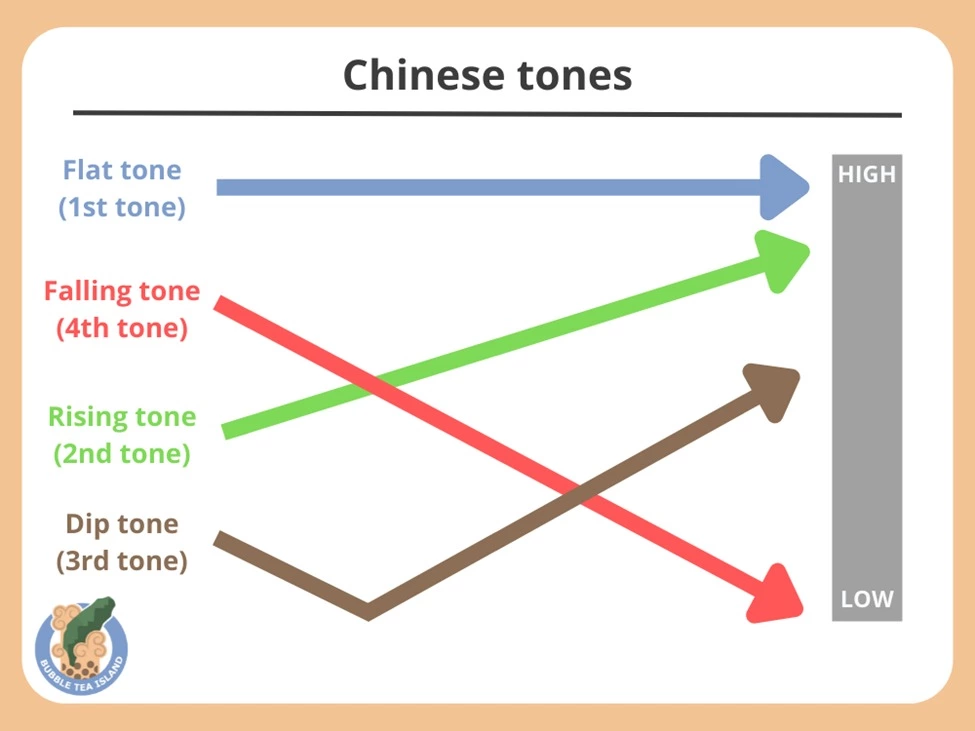Learning Chinese can be a challenging but rewarding experience, especially when it comes to mastering its tones. Tone is an essential aspect of Mandarin Chinese because it can completely alter the meaning of a word. My responsibility as a Chinese tutor is to assist you in comprehending these tones and learning the appropriate way to use them.
Here is a comprehensive guide that will help you navigate the Chinese tones.
Understanding Basic Tone Rules
Chinese has one neutral tone in addition to its four primary tones. To achieve correct pronunciation, one must acquire knowledge of each of these tones.
- First Tone: It’s a high and level tone. Imagine that it is a sound that is constant and high-pitched.
- Second Tone: A rising tone, similar to the intonation of a question in English.
- Third Tone: This is a falling-rising tone, starting mid-level, dipping down, then rising.
- Fourth Tone: A sharp, falling tone. Imagine issuing a decisive command.
- Neutral Tone: This is a light, unstressed tone.

Modulations in Tone: The Rules for More Professionals
The phenomenon known as tone sandhi describes how tones in Chinese can change depending on the context in which they appear in a sentence. Please take note of the following rules:
- Third Tone Sandhi: When two third tones appear together, the first one often changes to a second tone for more straightforward pronunciation.
- Tone Sandhi of 一 (yī): When a fourth-tone word follows 一 (yī), it changes to a second tone (yí). In the opposite direction, when any of the other three tones precede the tone ︀ (yī), it transforms into the fourth tone, yì.
- Tone Sandhi of 不 (bù): When a fourth-tone word follows 不 (bù), it changes to the second tone (bú).
The Role of Tone Pairs in Chinese
It is common practice in Chinese to pair words together, which results in the formation of tone pairs. These pairs exhibit specific patterns that are essential to recognize, including the following:
- First Tone Pairs: For example, 今天 (jīn tiān) means “today.”
- Second Tone Pairs: Take, for example, the Chinese character 明天 (míng tiān), which effectively means “tomorrow.”
- Third Tone Pairs: The word “like” (xƐ huān), which means “to like.”
- Fourth Tone Pairs: For example, 信息 (xìn xī) means “information.”
Practicing Chinese Tones
Practice is the most effective method for becoming proficient in Chinese tones. The key is to listen and repeat what you hear. It is necessary to pay attention to native speakers and try to imitate their pronunciation. Practicing with tone pairs will also be of great benefit.
Embracing the Rhythmic Flow of Chinese
The journey of mastering Chinese tones is not just about individual sounds; it’s about embracing the rhythm and melody of the language. Chinese, with its tonal nature, is often compared to music. Each word contributes to a sentence’s overall melody. Attention to this melodic flow can significantly enhance your understanding and speaking abilities. It’s like learning the notes before playing a song. Once you grasp the rhythm, the language’s beauty unfolds, making your communication more effective and authentic. This musical aspect is what makes learning Chinese tones both challenging and fascinating.
Conclusion
At first, comprehending and mastering Chinese tones may appear impossible; however, it becomes significantly more manageable with consistent practice and perseverance. Remember that tones are fundamental in Chinese, as they can alter the meaning of a word completely. Consequently, you should be fearless in making mistakes, take your time, and practice consistently.
For individuals interested in further mastering Chinese tones, considering the possibility of hiring a Chinese tutor through platforms such as italki can be an excellent way to receive individualized guidance and feedback.

